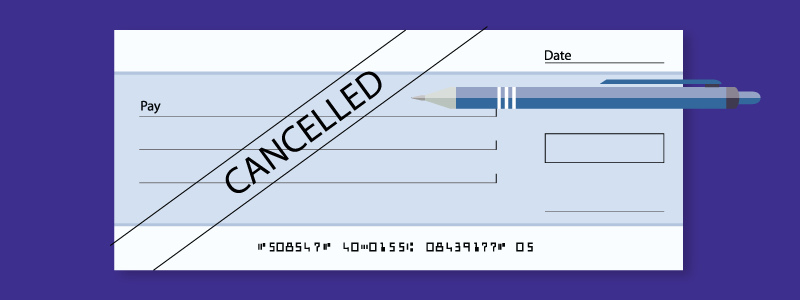A cheque is a part of the active financial system that makes it a crucial instrument to send and get money without any physical transfer of cash. How useful is the cheque, and what is a cross cheque?
In simple words, a cheque is tagged as a critical document that could be used by an individual, organization, or government for the transaction of varied fund values.

Cross Cheque
A crossed cheque is primarily any cheque that is crossed with two parallel lines. The lines could be drawn either across the whole cheque or with the top left-handed corner.
It simply means that the particular cheque could only be deposited straightway into a bank account and would not be instantly cashed by a bank or by any credit institution. This ensures a level of security for the payer since it needs the funds to be handled with a collecting bank.
Why Cross a Cheque?
- Crossing a cheque gives financial institution-specific instructions on how to handle cash.
- Crossed cheques are typically identifiable by drawing two parallel transverse lines vertically across the cheque or at the top left-hand corner.
- Between the lines, two or more words such as ‘and company’ or ‘not negotiable’ may be used. Simply drawing the lines without writing anything on them would not change the meaning of the crossed check.
- Cheque writers can use crossed cheques to protect the amount transmitted from being cashed by an unauthorized person or stolen.
- The nature of this format for crossed cheques may vary between countries in terms of its format or assertions.
- Since Crossed Cheques can only be paid through a bank account, the transaction record of the beneficiary can be tracked down afterwards for additional questions and clarifications.
Various Ways to Cross a Cheque
1) General Crossing
This type of cheque crossing needs two parallel transverse lines. There is no restriction to putting these parallel lines on a particular area on the cheque, but they could be drawn anywhere. Usually – it is advisable to put it on the top left of the cheque.
The usefulness of this crossing is that the cheque needs to be essentially paid to the bank.
2) Account Payee Crossing
Account payee crossing is also known as a restrictive crossing. This kind of cheque has to comprise the words account payee or account payee only. The cheque needs to be crossed either generally or specially.
The importance of this type of crossing highlights that the cheque is not negotiable anymore.
3) Special Crossing
The special crossing cheque does not need the name of the banker. The effect of this kind of crossing is that the cheque needs to be funded only to the banker that it has been crossed. It is a reminder to all of the people that a special crossing would not be changed into a general crossing.
4) Not Negotiable Crossing
In this kind of cheque crossing variety – the paper document needs to have the words not negotiable. Moreover, the cheque could be crossed specifically or generally. The cheque stays non-negotiable as well as the title of the transfer would not be better than the title of the transferor.
Uncrossing the Cheque
- When you are now familiar with the cross cheque meaning – then clearly, there is no way the payee could uncross the cheque. Furthermore – the cheque is known as non-transferable, which means it can’t be transported to a third party. The only action that is allowed is for the payee to deposit the cheque in an account with their own name.
- Therefore – the payee could uncross the cheque by lettering – crossing cancelled across the front side of the cheque. Such action is not recommended since it eliminates the protection the payer initially had in place.
FAQs
What is the amount payee crossing?
The above term denotes that the money cannot be transferred to any other bank account than the one specified on the check. Account payee crossover also ensures that funds are moved to a bank account rather than being given in the form of cash.
What is the significance of a crossed check without the words 'A/C Payee Only' or 'A/C Payee' printed on it?
This essentially denotes a broad crossing. A general crossing is not covered by the statute and can be ‘opened’ (erased) by the cheque payer if he signs the action of opening the crossing with his complete signature.